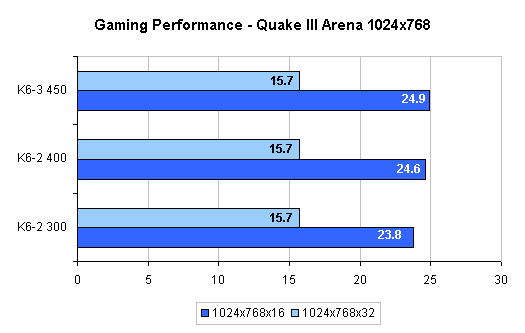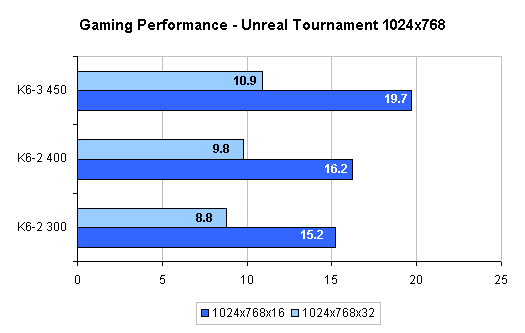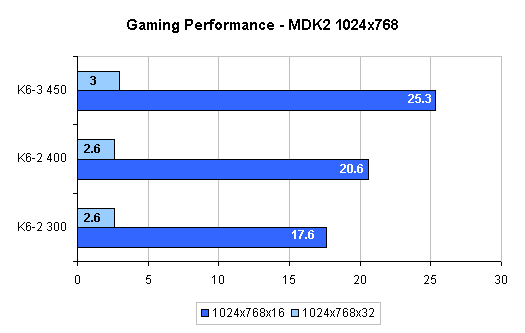CPU Upgrade - Gaming Performance
Although we expect 2D performance to increase greatly with faster CPUs, gaming performance is often thought to be dependent on the video card. Let's see how our CPU upgrades respond in our gaming benchmarks.
Quake III Arena

As we expected, CPU upgrades do not provide much oomph when the game is already video card limited. Forced to play on an aging NVIDIA TNT video card with only 16MB of memory, our base system is essentially unpalatable at 1024x768x32 no matter which CPU is used.
Unreal Tournament

Unlike the very video card intensive Quake III Arena, Unreal Tournament shows some benefit from faster CPUs. In 16-bit color, the baseline performance increases by 6.6% with the K6-2 400 MHz and 24% with the K6-3 450 MHz. Obviously the Unreal engine can put the K6-3's onboard L2 cache to good use. The performance of the systems increases by almost an identical percent when in 32-bit color.
MDK2

Our final benchmark, MDK2, reveals similar results to Quake III Arena, with the only differences in speed coming in 16-bit color. The K6-2 400 MHz performs 17% faster than the base system and the K6-3 450 MHz performs 44% faster than the base system. In 32-bit color, no performance is gained when going to a faster CPU due to the TNT bottleneck.










0 Comments
View All Comments